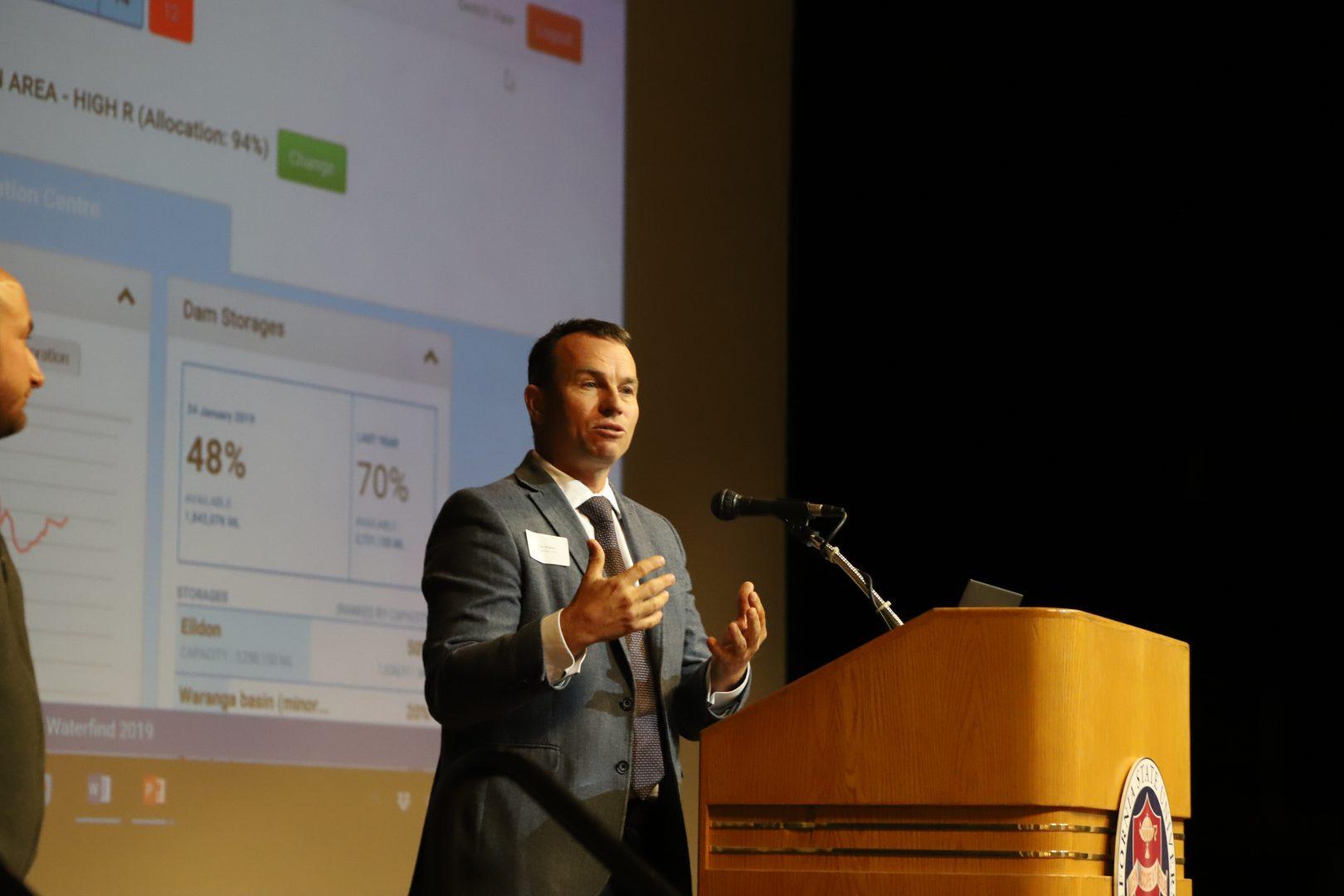Agricultural and environmental leaders spoke at the Water Market Exchange Symposium in the Satellite Student Union on Jan. 24 to share their perspectives on a water market exchange program.
The symposium featured speakers from water agencies, environmental interests, disadvantaged community interests and water market administrators.
According to Fresno State California Water Institute program manager Laura Ramos, the Sustainable Groundwater Management Act (SGMA) would result in reductions of the supply of groundwater, creating the need for a creative and innovative solution to efficiently manage it.
The water market exchange would allow those who have access to more groundwater than they need to sell it to those who need it.
The SGMA is a law enacted by California Legislature to ensure better local and regional management of groundwater use. The law seeks to develop and fully implement a groundwater management program by the year 2042.
The panels of experts agreed the water supply reductions resulting from the SGMA would have significant economic impacts on agriculture in the San Joaquin Valley.
Two economic impact studies for Kern County and for the Stanislaus, Merced and San Joaquin counties were conducted and the results had some grim projections.
Kern County is projected to lose $4.2 billion and 24,000 jobs and San Joaquin, Merced and Stanislaus counties are projected to lose $3.2 billion and 13,200 jobs.
“Such significant losses could have a devastating impact on the standard of living and quality of life in the San Joaquin Valley, which has already been characterized as the ‘Appalachia of the West,’ due to the education and income characteristics of the region,” Ramos said.
Ramos said that there will be a need to identify creative and innovative solutions for water resource management, and a water exchange market is a possible solution.
Vice president of water sustainability and executive director of the California Water Institute at Fresno State Thomas Esqueda speculated on what such an exchange market might look like.
“[A farmer] would say, for instance, that he has 100 acre feet of water left. In a perfect world, he would put that on a big board say that he thinks it is worth ‘x’,” Esqueda said. “He wouldn’t be the only one, there would be other people putting water on the market. Then people like you and I who would like to buy water for our crop or property would look at that list and say ‘OK, that guy has the proper amount of water, let me see the prices. Boom, I am going to buy that guy’s water.’”




